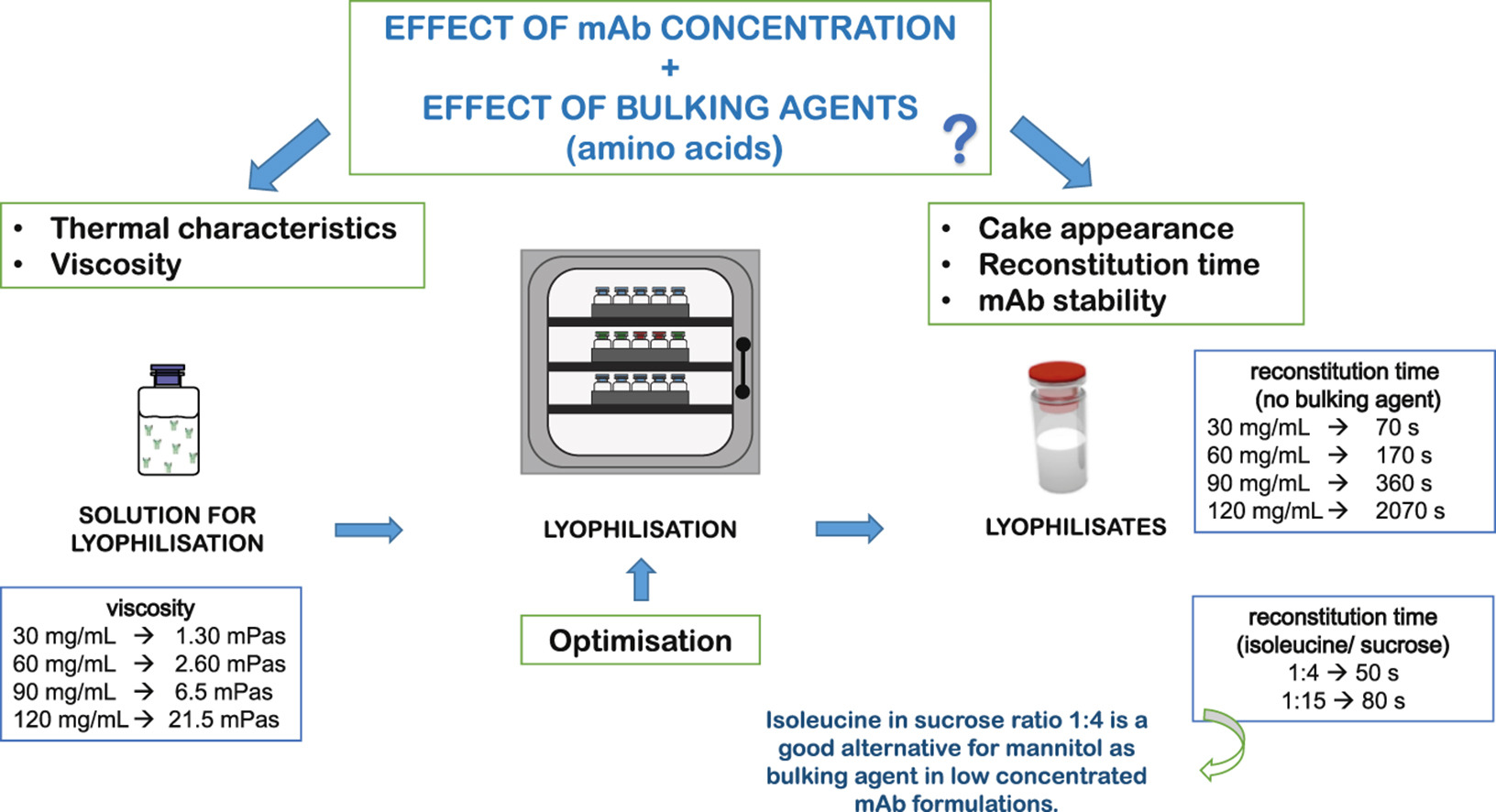Effects of monoclonal antibody concentration and type of bulking agent on critical quality attributes of lyophilisates

Biopharmaceuticals represent one of the fastest growing areas in the pharmaceutical industry. Previously, protein formulations for intravenous applications were most widespread, while now the subcutaneous route of administration is gaining importance. Subcutaneous administration requires high concentrations of protein drugs. Lyophilisation represents the method of choice for drying such formulations.
In this study the effects of monoclonal antibody (mAb) ‘drug’ concentration on the thermal characteristics and viscosities of pre-lyophilised formulations were determined. Additionally, the effects of mAb concentration on reconstitution time, cake appearance and mAb stability were evaluated. The main aim of the study was to investigate the effects of amino acids as selected bulking agents and their ratios to sucrose on the critical quality attributes of lyophilisate formulations at low and high mAb concentrations, as a comparison with the most commonly used mannitol formulations. Harsher aggressive drying conditions did not have any major impact on the critical quality attributes of lyophilisates or on mAb stability, while primary drying time was shortened by up to 80%.
The isoleucine:sucrose ratio of 1:4 provided a lyophilised cake with superior macroscopic appearance for low and high mAb concentrations despite aggressive drying, which greatly shortened lyophilisation time. However, the drawback of isoleucine in high protein concentration formulations is the long reconstitution time. In contrast, for low mAb concentrations, an isoleucine:sucrose ratio of 1:4 is promising for replacement of mannitol, as it provides suitable reconstitution time, cake appearance and mAb stability.
Article information: Maja Bjelošević, Pegi Ahlin Grabnar. Effects of monoclonal antibody concentration and type of bulking agent on critical quality attributes of lyophilisates, Journal of Drug Delivery Science and Technology, 2021. https://doi.org/10.1016/j.jddst.2021.102510.

